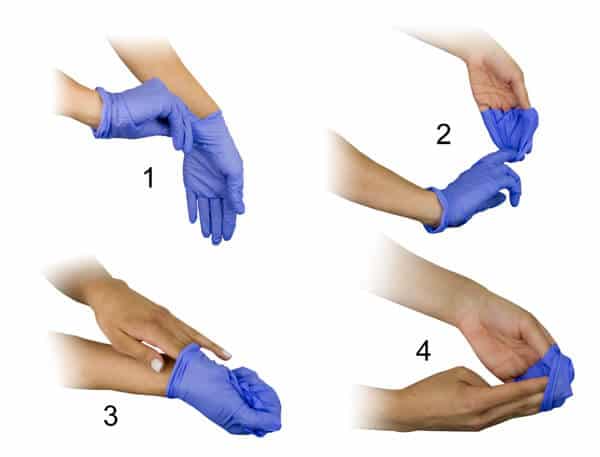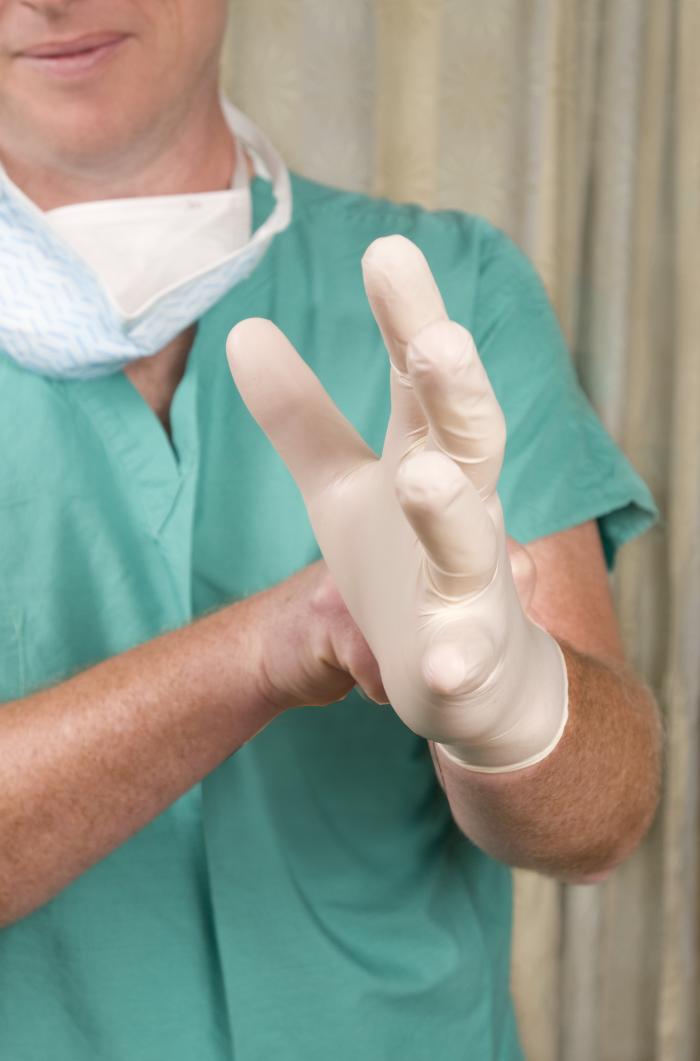Gloves Are Used to Protect Against Which Two Bloodborne Pathogens
That being said they are less durable than latex and nitrile and they offer limited protection against chemical or. Wearing appropriate PPE can significantly reduce risk since it acts as a barrier against exposure.

Handling Exposure Bloodborne Pathogens Certification Chapter 5 American Health Care Academy
Gloves Use gloves in all situations where you may come in contact with blood or body fluids.

. Bloodborne pathogens consist of many diseases but this blog focuses on the three most common. In any situation where you are dealing with bodily fluids whether drawing blood from a patient or assisting first aid of an injured co-worker you need to. All of patients must be treated as possible carriers of bloodborne pathogens.
Should fit snugly around and over eyes. Use lotion on your hands to prevent irritation and chapping which makes skin more prone to infection. Surgical gloves are used by healthcare workers to protect them against bloodborne pathogens and other potential infectants and to prevent wound contamination in patients.
The primary benefit of vinyl disposable gloves is that theyre inexpensive to manufacture. Finding the Glove Protection that Meets Your Needs This article discusses glove selection and latex-free environments. Universal precautions are simple.
Bloodborne Pathogens or most commonly known as BBPs are infectious microorganisms and bacteria found in the human blood or any other body fluidsThese pathogens can cause sickness in an individual that ranges from mild to severe. The best protection against Hepatitis B. Here are some of the important protective equipment that can help minimize exposure to blood borne pathogens.
There are different types of gloves including latex vinyl and nitrile. None of the above. Wearing gloves any time youre encountering bodily fluids is the first line of defense against contracting these illnesses.
Latex gloves and gowns-gloves and gowns protect your skin and hands from coming into contact with blood. Examples include gloves gowns and face shields. Against exposure to bloodborne pathogens such as hepatitis B virus HBV hepatitis C virus HCV and human immunodeficiency virus HIV the virus that causes AIDS is by providing and ensuring they use personal protective equipment or PPE.
Hand Protection For hand protection gloves are always the go-to option against BBPs. Goggles- protect the eyes. Take one or two fingers from the ungloved hand and insert them under the wrist of the gloved hand.
In other words wear appropriate personal protective equipment PPE as needed to prevent exposure which includes the following. They should also be used only once and should be properly disposed of right away. Using the proper equipment can make all of the difference in prevention against bloodborne pathogens.
Personal protective equipment is used to minimize exposure to bloodborne pathogens and may include gloves gowns masks or goggles and others. What is clean-up of all blood and body fluid spills. Possible carriers of bloodborne pathogens should be separated from non-carries.
In response to the increasing prevalence of allergies to natural rubber latex NRL among patients and medical staff the trend toward purchasing gloves made of synthetic materials is on the rise. One of the most important ways to prevent transmission of bloodborne pathogens. Although this cannot infer protection against viruses because they are.
Gloves are designed to protect your hands from bloodborne pathogens. Special precautions should be taken when dealing with possible carriers of bloodborne pathogens. Healthcare workers should use these to protect themselves against bloodborne pathogens.
ProFlex 730OD Performance Fire and Rescue Gloves with OutDry Bloodborne Pathogen Protection use an OutDry-bonded membrane eliminating the need for an insert and providing protection from water and disease-carrying. One of the most important ways to prevent transmission of bloodborne pathogens. So it only makes sense that it will also protect you against bloodborne pathogens.
Eyeglasses are not a substitute for. Use gloves for client care involving contact with mucous membranes such as brushing teeth. You should always wear gloves whenever you plan on coming into contact with blood or any body fluids.
They dictate that until proven otherwise any bodily fluid may contain the bloodborne pathogens that could kill you. As for EN 420 and EN 388 plus gloves resisting microorganisms must achieve performance level 2 in penetration. Immediately cleaned up or absorbent material placed on the area.
Vinyl gloves are made from PVC a petroleum-based film. Wearing protective gloves is essential to avoid contracting a disease. Lets look at the different types of PPE used to protect against the transmission of bloodborne pathogens.
By Rosaline Parson RN BSN CEN CCRN Gloves firstentered the healthcare scene in 1889 when an operating room nurse developed severedermatitis from mercuric chloride which was used as a cleansing agent. This is in further response to your letter of March 30 in which you requested clarification concerning the use of gloves in allergy testing and treatment procedures under the Occupational Safety and Health Administration OSHA regulation 29 CFR 19101030 Occupational Exposure to Bloodborne Pathogens. The universal precautions are based on the idea that.
Immediately cleaned up or absorbent material placed on the area. Ergodyne Gloves Hand protection OutDry Bloodborne Pathogen Protection ProFlex 730OD Performance Fire and Rescue Gloves. Bloodborne Pathogens Key Topic for 2015 Gloves The First Line of Defense.
Donning Doffing and Disposal. Before donning gloves do this for additional protection of breaks in the skin. Face Shield and eye protection -these items prevent blood from entering the mucous membranes through the eyes nose or mouth.
Tuck the bottom of the gown sleeve into your gloves to add one more layer of protection. The Bloodborne Pathogens standard 29 CFR 19101030 and CDCs recommended standard precautions both include personal protective equipment such as gloves gowns masks eye protection eg goggles and face shields to protect workers from exposure to infectious diseases. Before donning gloves do this for additional protection of breaks in the skin.
The single most effective form of protection for you and others during a potential bloodborne pathogen exposure. When taking a HeartSaver Bloodborne Pathogens course you will learn about Personal Protective Equipment PPE. Face shield Figure 2c.

Bloodborne Pathogens Worker Protections Against Occupational Exposure To Infectious Diseases Occupational Safety And Health Administration

Pin On I Never Thought Of That

6 Ways Hospital Gloves Can Keep You From Infection My Glove Depot
Comments
Post a Comment